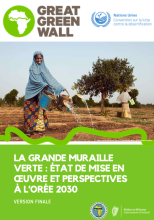Land Library Search
Through our robust search engine, you can search for any item of the over 73,000 highly curated resources in the Land Library.
If you would like to find an overview of what is possible, feel free to peruse the Search Guide.
/ library resources
Showing items 73 through 81 of 436.Small Island Developing States (SIDS) are continuously under the threat from the adverse effects of climate change and land degradation impacts.
Many Small Island Developing States (SIDS) have committed to establishing national voluntary LDN targets. By establishing LDN targets, SIDS have defined their ambitions and key priorities to address land degradation.
Land is the foundation for all life on Earth. How land is used and managed influences nature, food, water, energy, climate, and even our health. Today, the pressures on land and the wealth of resources it provides are greater than at any other time in human history.
At the United Nations (UN) Sustainable Development Summit on 25-26 September 2015, world leaders adopted the global framework ‘Transforming our World: The 2030 Agenda for Sustainable Development’, which included 17 global Sustainable Development Goals (SDGs) and 169 targets.
Established in 1994, the United Nations Convention to Combat Desertification (UNCCD) is the sole legally binding international agreement linking environment and development to sustainable land management.
This paper examines the intersections between youth access to land, migration decisions and employment opportunities using nationally representative and multi-year data from multiple African countries.
A narrative on rural youth in Africa has continued to evolve in policy circles around the world. Much of it is driven by population statistics that point to an imminent youth bulge in Africa and concerns about a poor economic outlook (stagnation) for African productivity and growth.
Countries of the Near East, North Africa, Europe and Central Asia (NEN) region face a myriad of social, economic and political challenges that have stalled their structural and rural transformation processes.


